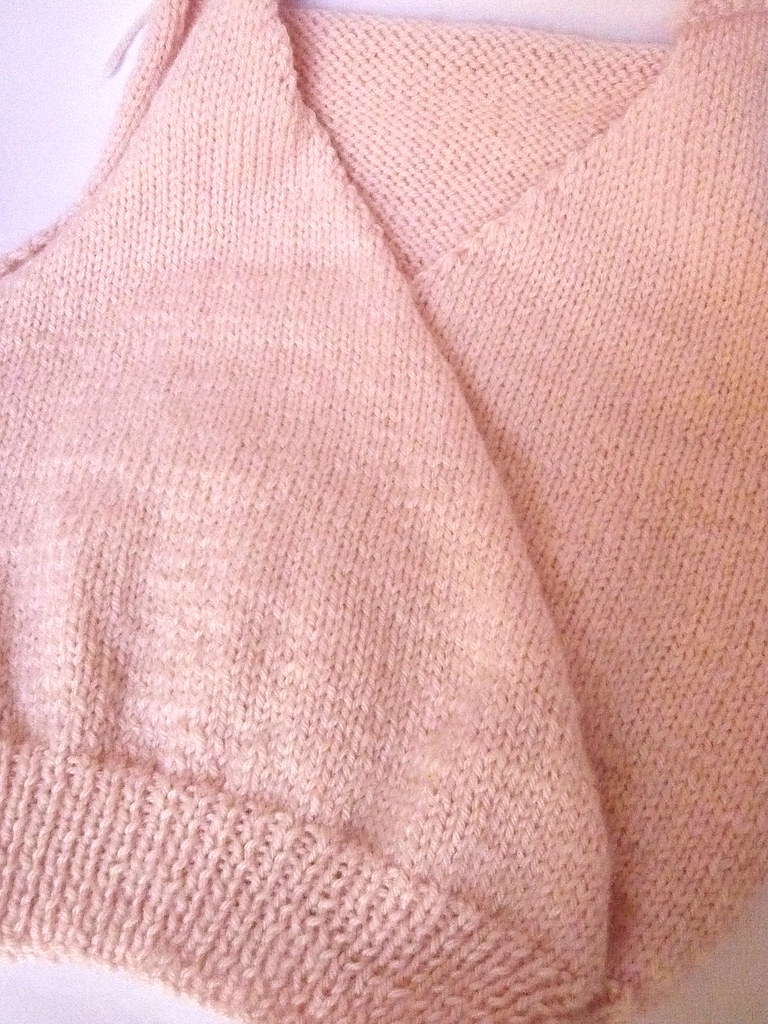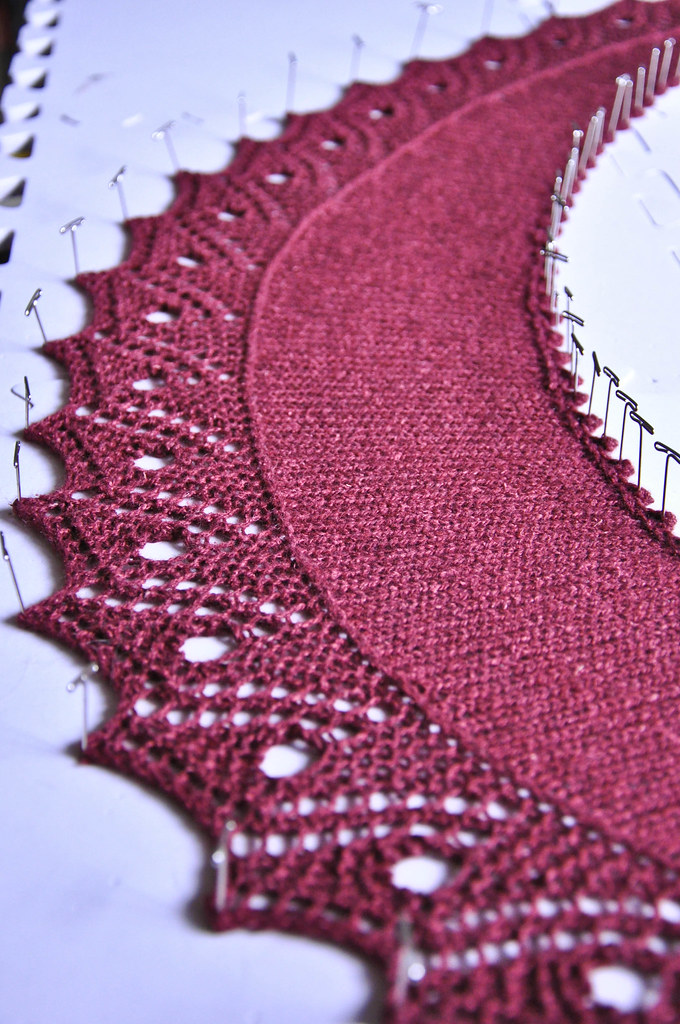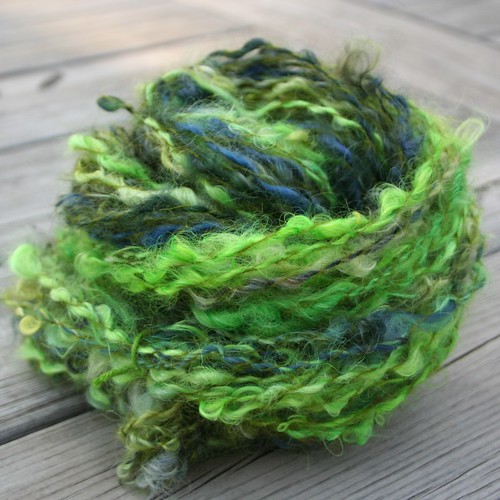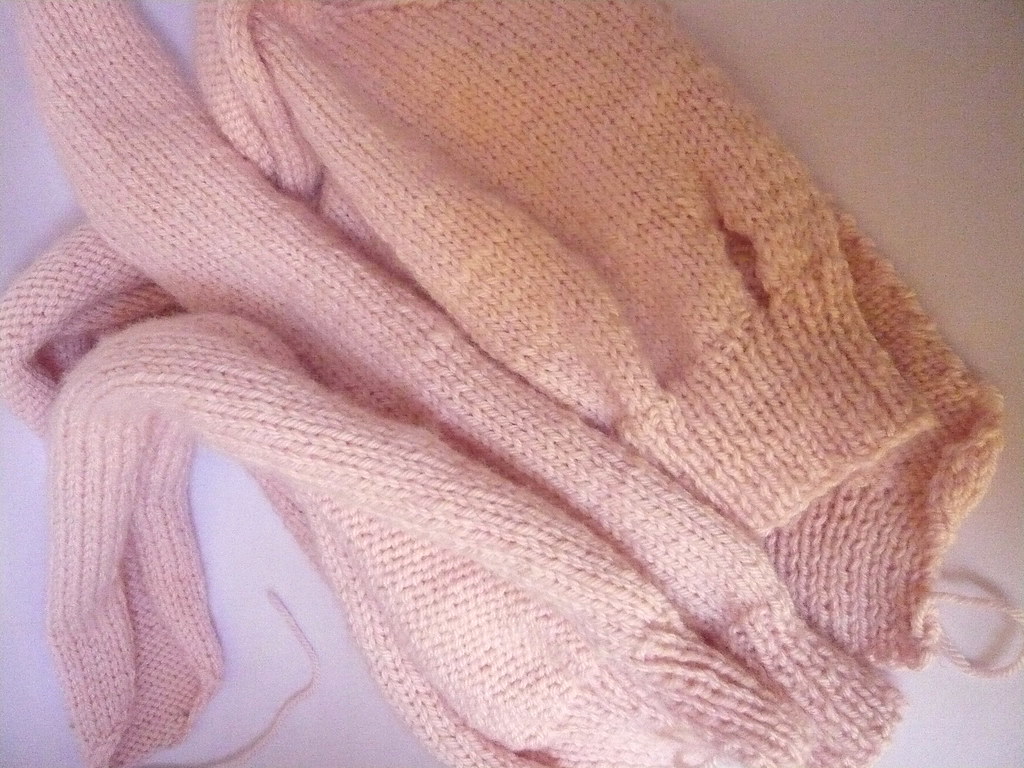Basically blocking
I’ve knitted all the pieces for Nelly’s ballet surplice; the body and two sleeves. The pattern gives instructions for two fronts and a back but I’ve knitted the body all in one piece because I think it’ll look neater without any side seams.
I’ve started knitting the front bands and will attach those once I’ve joined the shoulders and sewed the sleeves in. The ties are knitted and attached last of all.
But, before I begin sewing it all together I notice how curly all the edges are...…the sleeves are like brandy snaps! I wonder if I should block them first?
I decide to consult some books.
Something that you should know about me is that I have a love affair with books (with all things paper related actually, you know, little notebooks, pens…). The internet is great, but books make my heart beat a little faster.
Anyhow, back to blocking…
My goodness! I didn’t realise what a hornets' nest I had stumbled into! Are you ready for this??? Hang in there people…!
There seems to little consensus about how and when to block. Thank goodness everyone seems more-or-less agreed about what blocking actually is!
“the process of laying flat completed pieces of knitting to even and smooth the stitches to give them their permanent shape”.
And, there also seems to be some agreement that there are more-or-less two ways to block: wet blocking and steam blocking (also called dry blocking).
But how to do it? Well, both involve infusing the fibres of your knitted piece with enough water so they settle into their final positions. Essentially, wet blocking involves soaking the knitted piece and then laying it out flat to dry. Steam blocking uses steam to smooth things out.
And from here on in, opinion is divided.
WET BLOCKING
Lovely Ysolda suggests in Little Red in the City that we soak our knitting in lukewarm water with a little no-rinse wool soak or some mild shampoo for about 20 mins and then after draining the water, scoop up the whole lot (being careful not to let anything droop down on its own, or it will stretch) and gently squeeze it. Maggie Righetti (wouldn’t you love to have her next door? I’d pop in for tea and knitterly chat) recommends in Knitting in Plain English, that we slosh our knitting around in wool wash (not too many bubbles!) for a bit then scoop it into a colander. She then rinses it in cold water and pushes it down in the colander to remove the water. This can be repeated two more times until the water runs clear.
Both agree, NEVER WRING!!!! This can cause your knitting to felt.
Ysolda and Maggie both recommend removing the worst of the water from your knitting with towels. Ysolda lays her knitting on a towel, rolls it up like a giant swiss roll and treads on it (this is actually quite fun!). Maggie is rather more vigorous, also rolling hers up towels, but then bashing it against the side of the sink, before letting it sit for fifteen minutes.
Your knitting, once unrolled, should now be damp rather than wet (if it’s still wet, roll it up again!). Lay it flat, don’t hang it to dry. Hanging will cause your knitting to stretch under it’s weight and shrink widthwise. You might choose to lay your knitting on a towel or a special blocking mat. Smooth it into the measurements it is supposed to be and leave it in a warm, out of the way place, until it is totally dry. Maggie suggests replacing the towels through-out the drying process several times by flipping your knitting carefully onto a clean towel.
Vogue have another suggestion for wet blocking. You might like to pin your knitting down (a blocking mat, or fabric with a square pattern like gingham, is helpful for getting the correct measurements) and then spray it with water until it is really wet. They say that this works well for heavy garments in order to shorten the drying time.
Pinning is also essential for lacework. Blocking works wonders on lace knitting, opening up all the yarn-overs and sharpening the edges on points. Use straight, non-rusting pins to open eyelets and lengthen corners. Long pins like T-pins are easier to use (like in the image above).
STEAM BLOCKING
Elizabeth Zimmerman was a great proponent of this method. She talked about heating up your iron and “dabbing it at your knitting”. However, she was clear to point out that you should NEVER IRON IT! This seems to be generally agreed. Ironing may cause the fibres in the yarn to felt as they are agitated. First, check what your yarn consists of, and be careful how hot your iron gets. Cotton can take a hotter iron, whereas some synthetics need it cooler. Don’t scorch it!
In fact, steam blocking can be performed with either a steam iron or a specialist garment steamer. Choose a surface where you can lay your knitting out flat. An ironing board might be fine for smaller pieces but you might need to use a table, or even the floor, for larger bits.
You can try several different methods with your iron. Both Ysolda and Elizabeth Zimmerman talk about simply holding the iron above the surface of your knitting and steaming it. Vogue recommends using a pressing cloth between your iron and your knitting. You could either use a dry cloth and a steam iron, or a wet cloth and a dry iron.
Maggie’s approach is more involved (and she really dislikes steam blocking…) She suggests covering your knitting with a smooth soft-press cloth and then a wet towel. Hold your iron half an inch (a couple of centimetres) over the towel until the towel becomes hot and steamy. Check whether your knitting is hot and steamy by sliding your hand underneath (carefully!) and if so, move to another area. If not, repeat closer to the towel, but not touching.
Once steamed, Elizabeth Zimmerman pulled her knitting vertically to help it into shape. Once it is in it’s correct shape, leave your knitting until it is cool and dry. Don’t move it!
WHICH ONE WHEN?
When do you wet block and when do you steam block? Elizabeth Zimmerman was keen to steam block because it was convenient. Ysolda seems to use both methods and notes that steam blocking is good for getting out crisp wrinkles. Maggie thinks that wet blocking gives the best results. She likes that it removes soiling, leaves your knitting with a fresh smell and restores the natural “loft” of your yarn. Pieces might also be stretched more easily with wet blocking.
Fortunately, although some knitters have very firm preferences for one over another, Vogue kindly reminds us that in fact there is no right or wrong, it is a matter of personal preference. Phew!
Having said that, some yarns should never be steamed. Fluffy yarns like mohair and angora have a tendency to felt, mat and harden and some man-made fibres expand in all directions when steamed.
And, some yarn just won’t respond to blocking at all, particularly those containing lurex or highly textured yarns with many different fibres.
As some yarns, including silk fibres, may contain unstable dyes, check them for colour-fastness before blocking. You could either test a swatch or, as suggested by Vogue, thoroughly wet a piece of yarn and wrap it tightly around a paper towel. If it bleeds, you might decide to dry-clean it.
IN PIECES?
So what about Nelly’s ballet surplice?
Should I block the pieces before I sew them together?
In Little Red in
the City, Ysolda says that you could block her Angostura
top (knitted in pieces) after it is sewn up, that blocking in pieces will
get rid of the rolling, uneven edges and might make seaming easier. Vogue
recommends blocking most pieces of knitting before you seam them, then lightly
steam the seams from the wrong side. But, Maggie doesn’t believe in steam
blocking pieces before joining or seaming. She thinks it is too difficult to
get all the edges even in length and as we will also want to smooth out our
seams/joins and the areas where stitches are picked up after joining, why waste
time blocking twice? She recommends joining and completing the garment and wet
blocking it once, at the end.
Maggie does admit that you may want
to block your garment in pieces where you intend to line it with cloth, but she
goes on to say that actually, she isn’t fond of cloth-lined hand knitting and
would rather use a pattern stitch, firm gauge or combination of fibres to
achieve a firm fabric!
So that is blocking (in a rather
long-winded nutshell…) and, what am I going to do with Nelly’s surplice?
Well...
I'm going to sew it up, unblocked…
But, I haven’t decided whether I am
going to block it wet or dry when it is all finished… I’ll let you know!
What would you do?
P.S. The books I’ve used are:










